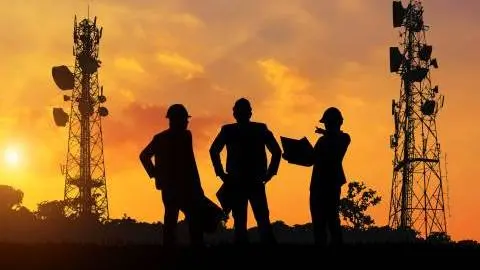Fibre technology and photonics are advancing at speed
The telecoms industry could be on the verge of taking another leap as far as technological advancement is concerned as it copes with ever-increasing demand for extra bandwidth
There always seems to be a strong demand for higher bandwidth capacity. And this trend has driven the need to use more optical components. In the past, most telecom networks were built with copper wires. Today, fibre cables are the backbone of the networks. These networks are much more enabled for higher bandwidth capacity and are more energy efficient. With new technologies, there is also the potential to upgrade the capacity of modern, existing fibre wires. Notably, this is an application of photonic technologies. The idea that photonic technology is more energy efficient can possibly also be said of new semiconductor designs and other electronic components, such as network switches.
Upgrades to capacity of fibre lines
The transition from copper to fibre networks can be seen as one of the most important changes for the industry in the last two decades, besides the application of new mobile technologies. What has gained less interest is the fact that not all fibre networks are the same; in fact, there are many different standards and applications. Since the turn of the century, the capacity of fibre networks has increased massively from less than a gigabit per second in the early 2000s to about 100Gb/s (over a single wavelength) today, according to Nokia.
Today, broadband providers for the consumer market often offer XGS-PON techniques, giving a 10Gps connection with symmetric upload and download speeds. This is a different technology than the previous point-to-point network technologies that, in the case of KPN, offered 2.5 Gbps downstream and 1.25 Gbps upstream speeds. KPN is today continuing the network rollout with XGS-PON technologies, while legacy fibre connections are now being upgraded. However, successors of the XGS-PON technologies are just around the corner, with 25G-PON being tested by KPN and Proximus. This looks to be good news for the prospect of the economic lifetime of existing glass fibres, although the technology is unlikely to be available in consumer markets in the near term.
Network upgrades
Consumer-focused upgrades also have implications for the core network. Strong growth in new applications involving 5G and cloud computing is contributing to a demand for high bandwidth. This bandwidth can be enabled through fibre cables which can transport up to 400 Gb/s. Within internet protocol networks, this traffic will be directed through routers and switches. In 2023, the 400G technology will be the dominant new technology for backbone networks.
Verizon, for example, will upgrade its core network using Juniper Networks’ PTX series routers which support 400G interfaces. This router can handle 400Gb/s through a single port. You might think that such systems require a lot of energy, but they are more efficient than previous technologies. These developments require innovations within the router but also within the optical devices connecting the fibre with the router or switch. And here, other photonic innovations come into play.
Simplified network design - highest speeds at the network core
Photonics and data communication
Our internet networks underwent a transition from copper to fibre. We may well see something similar, albeit on a smaller scale, in the world of microchips and, more specifcally, photonic integrated circuits. As industry experts, PhotonDelta put it:
'Photonics is similar to electronics. However, instead of electrons, it uses photons to transfer information. Photonic technology detects, generates, transports and processes light. Current uses include lasers, sensors, and fibre-optic networks. Photonic Integrated Circuits (PICs) combine two or more photonic functions into a single chip to create new, faster, and more energy-efficient devices. Leveraging the power of light, PICs are highly effective at processing and transmitting data'.
New breakthroughs in the domain of photonics in 2023 could possibly make telecom equipment more energy efficient and cheaper. Google revealed that it has been using optic circuit switches in its data centres for five years.
Download
Download article
7 February 2023
Telecoms Outlook 2023: Navigating challenges at the speed of light This bundle contains {bundle_entries}{/bundle_entries} articlesThis publication has been prepared by ING solely for information purposes irrespective of a particular user's means, financial situation or investment objectives. The information does not constitute investment recommendation, and nor is it investment, legal or tax advice or an offer or solicitation to purchase or sell any financial instrument. Read more
